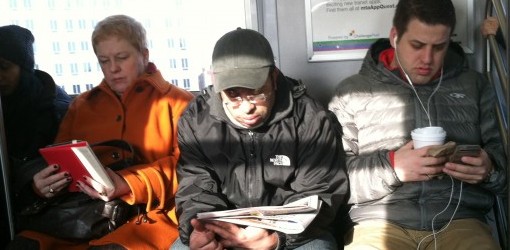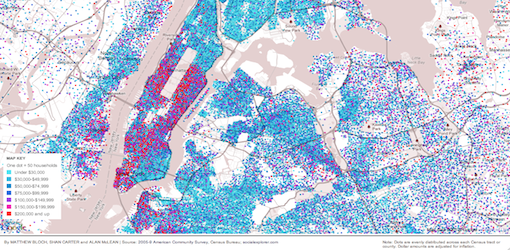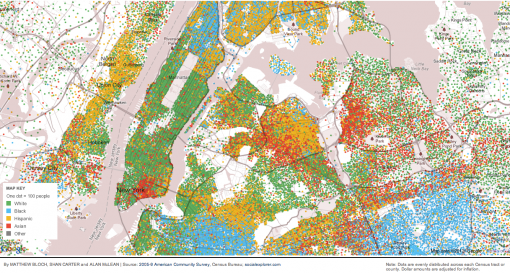Groupthink, Citythink, Contact
Posted on November 30, 2012 | posted by:
A mariachi band enters your subway car. As the band strums its first notes, you can almost feel the annoyance of the people around you looking down, opening books, turning on phones or e-readers, anything to avoid eye contact with the musicians. But as the musicians play off each other’s energy, you notice a shift. You feel your neighbor start to sway, you catch eyes with the person sitting across from you, and suddenly you’re smiling, exchanging pleasantries and book recommendations.
Okay. Not every subway ride is this pleasurable. But chances are you’ve at least one similar story about a moment of pleasant/good willed contact in normally unspectacular circumstances in NYC.
I was thinking about these moments when reading about MIT’s Building 20, a center infamous for groundbreaking innovation and research, in Jonah Lehrer’s article Groupthink. What struck me about Building 20 were the unplanned moments of contact and communication that characterized it and that lead to many of its successful collaborations. Because Buiding 20 was so haphazardly designed, people often had chance encounters and incidental conversations. And because Building 20 housed a conglomerate of people from different disciplines and with varying interests, usually the people interacting would not have if they were segmented in their own academic communities. The information sharing that occurred facilitated the group activity that made Building 20 such a creative hub.
“When the composition of the group is right–enough people with different perspectives running into one another in unpredictable ways–the group dynamic will take care of itself,” says Lehrer. Author and critic Samuel Delany would agree. Delany explores the significance and benefits of moments of contact in his book Times Square Red, Times Square Blue. He posits that interclass, intercommunity contact and communication make life most rewarding, productive, and pleasurable. In Times Square Red, Times Square Blue Delany reflects on his own experiences of Times Square before its redevelopment, when a mix of middle class and working class people frequented the area and its gay sexual outlets—its sex theaters, baths, bars, and sex lounges. People from different ethnic and socioeconomic backgrounds, from different generations and walks of life, interacted openly–both in sexual and nonsexual encounters–in a manner of good will; and the benefits of these interactions were profound. Delany describes the pleasure of sharing a sexual experience and of sharing a smile, the significance of developing a deep understanding of oneself in relation to others, and the usefulness of the practical connections and exchanges that occurred—information sharing.
New York City hosts a diversity of people, but the city itself has become quite segregated. This interactive map, based on data from the Census Bureau’s American Community Survey from 2005-2009, shows how the largely segmented the racial and economic distribution in New York City:
Household income distribution
Distribution of racial and ethnic groups
Why isn’t there more integrative diversity? Why isn’t there more contact? Delany argues that the problem is the city’s infrastructure. He suggests infrastructure is dictated by a class war that perpetually works to erode the social practices through which interclass communication takes place, and to destroy the institutions that hold those practices stable. Our urban design philosophy is flawed.
I believe the greatest task of today’s designers is to combat this—to design for diversity, instead of solely for profit; and to promote contact through design. Delany suggests our urban planning must change: we must build large and small side by side; intermix living spaces with commercial spaces, eateries, repair spaces, and entertainment spaces; and alternate large businesses and offices with small businesses and human services. In doing so, New York City could become a hub for creativity and innovation.
Why not start with the subway? On your commute home today look around. You’re likely surrounded by people from different communities, socioeconomic backgrounds, and generations, with different interests and expertise. Just think of the possibilities for innovation if a subway car full of people were to exchange information and ideas, and consider how much more pleasant your commute would be if people weren’t afraid of making contact.

